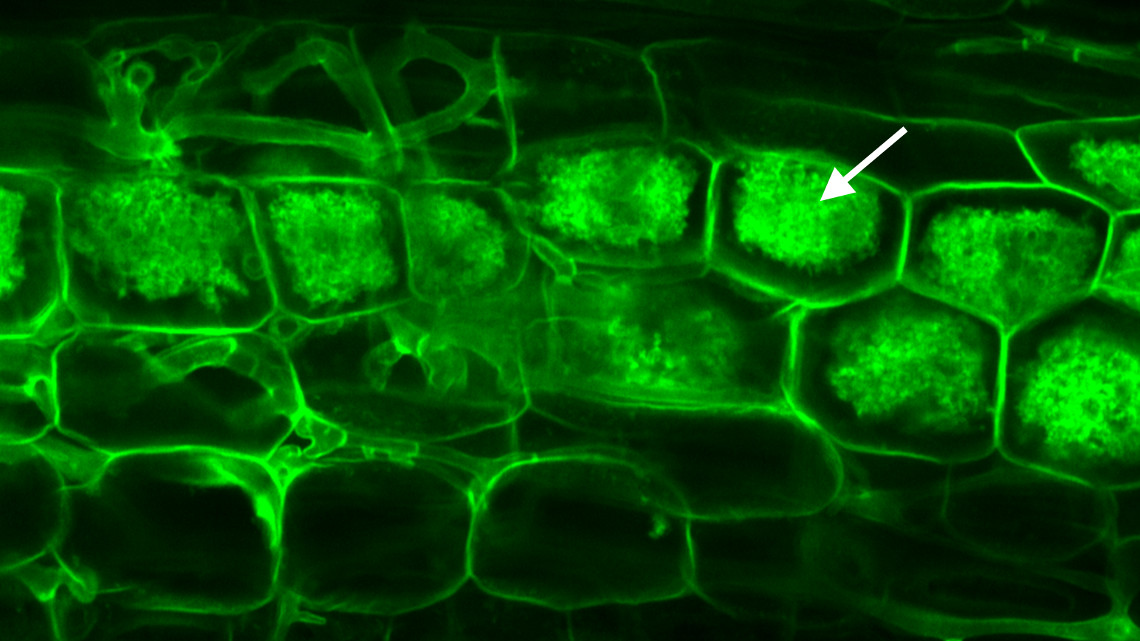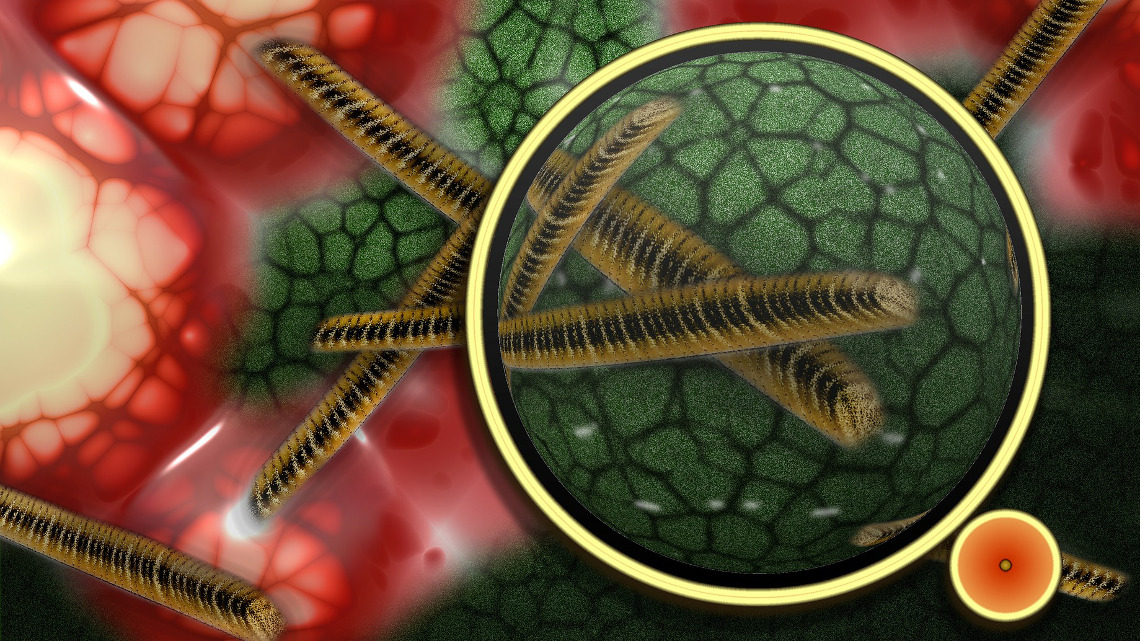Symbiosis: How clover and fungus became friends
Symbiosis between plants and fungi is common. The organisms supply each other with important, growth-promoting nutrients. They give each other a helping hand even under extreme conditions.

Researchers from Karlsruhe have now uncovered how clover and fungi 'make friends' with each other. The thread-like fungal hyphae of the mycorrhiza permeate the soil and lead to increased root growth, as the team reports in the scientific journal Current Biology (2016, online publication). Fungi such as downy mildew or grey mould are a plague for both hobby gardeners as well as farmers. But there are also many fungi that enter into symbiosis with plants so that both partners profit. Over 80% of all land plants enter into close-knit associations with arbuscular mycorrhizal fungi ('AM fungi'), which promote their growth. As fungi cannot perform photosynthesis, they get essential carbohydrates from the plant. In return, the fungus supplies the plant with water and nutrients such as nitrogen and phosphate, as well as protecting it from pests. Interestingly enough, neither soils poor in nutrients nor other stress factors impair the symbiosis.
An unusual degree of adaptability
But how does this amicable bond come about? That is the question that researchers from the Botanical Institute of the Karlsruhe Institute of Technology (KIT) have posed. A working group led by Natalia Requena studied the molecular processes that take place while a symbiosis comes into being. "A plant that enters into a symbiosis with arbuscular mycorrhizal fungi must adapt in a manner that is unusual and precisely controlled," explains Natalia Requena.
A gene switch controls root cortex development
As the scientists report in the scientific journal Current Biology, a certain gene is responsible for this. It is activated by the AM fungus in a targeted way, and that is what influences the development of the plant root. The transcription factor concerned is MIG1. It changes the development of the root cortex by causing more and larger root cortex cells to develop, and the diameter of the roots increases markedly. The study also showed that when the activity of MIG1 diminishes, this leads to deformed arbuscules.
The plant is the 'director' of the symbiosis
The role played by the gene was revealed to Requena's team through their investigation of a plant species from the burclover genus: Medicago truncatula. "As soon as it detects a semiochemical (signalling substance) that is emitted by the fungus, the plant activates its genetic programme for such a symbiosis – before it even has physical contact with the fungus," reports Natalia Requena. The investigation showed that it is the plant that 'calls the tune' for the most part as the symbiosis comes into being. The colonization of plant roots by AM fungi is restricted to the epidermal tissue and the cortex. The cellular threads of the fungus, the so-called hyphae, penetrate deeply into the root cortex and form ramified structures called arbuscules. The partnership is consummated, so to speak, by the plant enveloping these arbuscules with a 'periarbuscular membrane' that is specially synthesized for the purpose.


